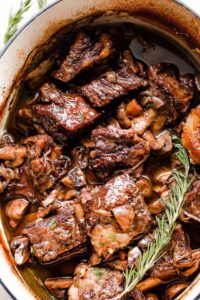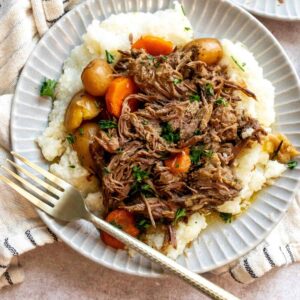Bechamel, often referred to as white sauce, is one of the “mother sauces” of French cuisine. With its silky-smooth texture and neutral yet rich flavor, this sauce forms the foundation of many beloved dishes such as lasagna, macaroni and cheese, and gratins. Originating in 17th-century France, it was named after Louis de Béchameil, a steward in the royal court.
This elegant sauce is cherished for its creamy consistency and subtle flavor, making it a versatile base for both everyday and gourmet meals.
Ingredients
Here’s everything you need to make a classic bechamel sauce:
-
2 tablespoons butter
-
2 tablespoons all-purpose flour
-
2 cups whole milk (warm)
-
1/4 teaspoon salt
-
1/8 teaspoon ground white pepper (optional)
-
A pinch of ground nutmeg (optional but traditional)
Substitutions:



-
Butter: Use plant-based butter for a vegan version.
-
Flour: Use gluten-free flour blends for a gluten-free sauce.
-
Milk: Substitute with unsweetened almond milk or oat milk for dairy-free options.
Step-by-Step Cooking Instructions
-
Warm the milk in a saucepan or microwave. Keep it hot but not boiling.
-
In a separate saucepan, melt the butter over medium heat.
-
Add the flour to the melted butter and stir continuously to form a roux (a smooth paste). Cook for 1–2 minutes to remove the raw flour taste, but don’t let it brown.
-
Gradually add the warm milk, whisking constantly to prevent lumps. Add it slowly to ensure smoothness.
-
Bring the mixture to a gentle simmer, still whisking. Cook for 5–7 minutes, until the sauce thickens and coats the back of a spoon.
-
Add salt, white pepper, and nutmeg to taste. Stir to combine.
-
Remove from heat and use immediately, or cover to prevent a skin from forming.
Common Mistakes to Avoid:
-
Adding cold milk can cause lumps — always warm your milk.
-
Not stirring constantly may lead to burnt roux or lumpy sauce.
-
Cooking too long can make the sauce too thick or clumpy.
Pro Tips and Cooking Techniques
-
Use a whisk instead of a spoon for smoother results.
-
For extra richness, stir in a splash of cream or grated cheese.
-
A heavy-bottomed pan helps distribute heat evenly and prevents burning.
-
If lumps form, strain the sauce through a fine mesh sieve.
Variations and Customizations
-
Cheese Sauce (Mornay): Stir in grated Gruyère or Parmesan.
-
Vegan Bechamel: Use plant-based butter and unsweetened almond or oat milk.
-
Herbed Bechamel: Add bay leaf, thyme, or garlic while warming the milk.
-
Low-Carb: Use almond flour or coconut flour (results may vary in texture).
Serving Suggestions
-
Lasagna: Spread between pasta layers.
-
Mac and Cheese: Use as a base before adding cheese.
-
Vegetable Gratin: Pour over blanched veggies and bake.
-
Croque Monsieur: A perfect topping for this classic French sandwich.
Garnish with:
-
A light dusting of nutmeg
-
Chopped parsley for color (optional)
Nutritional Information (Approx. per 1/4 cup serving)
-
Calories: 120
-
Protein: 2.5g
-
Carbohydrates: 6g
-
Fats: 10g
-
Fiber: 0g
-
Sugar: 3g
-
Calcium: ~80mg
Frequently Asked Questions (FAQs)
Can I make bechamel sauce ahead of time?
Yes. Store it in an airtight container in the refrigerator for up to 3 days. Reheat gently, adding a splash of milk to loosen.
How do I fix lumpy bechamel sauce?
Use a whisk vigorously, or strain the sauce through a sieve.
Can I freeze bechamel?
It’s not ideal — the texture may change. Fresh is best.
Why is my sauce too thin or too thick?
Adjust the flour-to-milk ratio next time. Simmer longer to thicken or add more milk to thin it out.
Closing Thoughts
Bechamel sauce may seem fancy, but it’s incredibly approachable and adds a rich, creamy depth to countless dishes. Whether you’re a home cook or an aspiring chef, this foundational recipe is a must-have in your culinary toolkit.
Try it out, make it your own, and don’t forget to share your delicious results!



